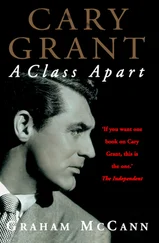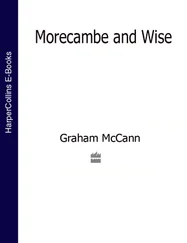In How to Become a Comedian (a compact little manual that had been published in 1945), the veteran music-hall star Lupino Lane had spelled out the conventional code of conduct to be followed by any fledgling stand-up comic. Typical of his schoolmasterly instructions were the following sober decrees: âAny inclination to fidget and lack âstage reposeâ should be immediately controlled. This can often cause great annoyance to the audience and result in a point being missed. Bad, too, is the continual use of phrases such as: âYou see?,â âYou know!â, âOf courseâ, etc. These things are most annoying to the listener.â 26 Even if some people, at the time, might have resented the intolerant tone, no one really questioned the general advice. No one, that is, except Frankie Howerd.
For all of his myriad insecurities, powerful bouts of crippling self-doubt and near-paralysing second thoughts, when it came to the true heart of his art, Howerd always knew exactly what he was doing â and what he was doing, on that first and on subsequent nights, was walking out in front of as many as 3,000 people and redefining the very nature of what being a stand-up was all about. He made it seem real. He made it into an act that no longer appeared to be an act. He pumped some blood through its veins.
What made the newly professional Frankie Howerd so impressively sui generis as a performer was the very thing that made him seem, as a character, so very much like âone of usâ. He stood out as a stand-up by refusing to stand out from the crowd. For all of his many influences, the thing that really made him special was his willingness to be himself.
âIn those days,â he would recall, âcomics were very precise: they were word-perfect, as though reading their jokes from a script, and to fluff a line was something of a major disaster.â 27 Howerd, in contrast, told these same jokes just like the average member of the audience would have told these jokes: badly. He shook up the old patter from within, via a carefully rehearsed sequence of increasingly well-timed stutters, sidetracks and slip-ups, until, eventually, the whole polished package was scratched and then shattered â leaving people to laugh not so much at the jokes as at the person who was trying to tell the jokes.
No audience, back in 1946, had anticipated such an approach, but, when it was witnessed, it worked. It worked, explained Howerd, because, unlike the conventional comedy style, the approach invited identification rather than mere admiration. By daring to appear imprecise, he brought his art to life:
[The approach] worked, because the ordinary chap whom I was portraying is imprecise. Youâve only to listen to the answer when a TV interviewer asks what someone thinks of the Government: âWell ⦠You know ⦠Yes ⦠Well, the Government ⦠Yes, well ⦠What more can I say? â¦â People in real life donât talk precisely as though from scripts, and neither did I attempt to on stage. My act sounded almost like a stream of consciousness, which is why I often didnât finish sentences. âOf course, mind you â¦â trailed away into silence â as again happens in real life. 28
It was the perfect post-war comedy persona: a âproperâ person, with no airs or graces but plenty of fears and frailties â just like the vast majority of the people he was entertaining.
Right from the start of his nine-month run in For the Fun of It , he was rated a performer of rare potential. Semi-hidden in the small print at the bottom of the bill, he soon became many theatregoersâ special discovery, the unknown performer who inspired them to exclaim at work the next day: âYou should have seen this act!â He soon started winning even more admirers once Bill Lyon-Shaw had coached him in the craft of commanding, as a professional, an ever-changing audience:
He was actually a very poor timer in the earliest days of the tour, and this was simply because heâd previously spent about two years playing in camp concerts to soldiers, whoâd laughed the moment he went on. The reason theyâd laughed was that they knew him, and they knew that he was going to take the mickey out of the Major, and the General, and send-up the Sergeant-Major. So they were a dead-cert audience to start with. Whereas once he went into Civvy Street, it was a different matter. When he got up North, for example, and into Yorkshire â where theyâre a bloody hard lot anyway â theyâd be saying, âWhatâs this bugger doinâ âere, ey? Does he not know what heâs about yet?â He had all of that carry on. And so he had to learn timing, and learn to adjust his pace to the audience he was playing â youâve got to be much faster in the South and much slower in the North, and youâve got to be impossible in Scotland â and learn to pay far more attention to that kind of detail. 29
Grateful for the expert advice, Howerd proceeded to do just that, and, as a consequence, gathered an even greater quantity of praise as the tour progressed. The other two novice professionals on the bill, Max Bygraves and Pam Denton, were also attracting an increasingly positive audience reaction. Both of them, as the tour evolved, would grow increasingly close to Howerd.
The friendship with Bygraves was probably one of the firmest Howerd would ever have. Sharing both a dressing-room and digs throughout the duration of the tour, the two young comedians became each otherâs primary advisor, sounding-board, supporter and all-purpose âcheerer-upperâ.
The first time that Bygraves (a much more traditional type of comedian) saw Howerd in action, he thought him âthe most nervous performer Iâd ever metâ. 30 The act, however, impressed him â as, indeed, did the high degree of courage it took to do it â and he became very protective of his very talented but horribly anxious new friend. At the end of the tourâs first week, for example, Bygraves discovered that an over-cautious Frank Barnard was attempting to pressure Howerd into cutting out the most audacious aspects of his act. âWhy donât you stop bullying him?â he shouted at the boss. âYou can see the boyâs a nervous wreck, so why donât you leave him alone until he gets settled?â 31
His intervention was only partially successful â Howerd did have to squeeze into his routine a few things that were more immediately recognisable as jokes â but the gesture, none the less, could hardly have touched the co-performer more deeply. âIâve always been grateful to Max for speaking up for me,â Howerd later said, âand Iâve always admired his guts: after all, like me heâd been in the business just a week, yet there he was arguing the toss with the management and risked being tossed out of the show on his ear.â 32
The pair went on to evolve together as performers. âWe were about the same age, same weight and height,â Bygraves reflected, âand both had the same dreams of making our way in show business.â 33 Both certainly benefited from being taken under the wing of the senior pro on the tour, Nosmo King. 34
An asthmatic, cigar-puffing stand-up comic in his sixtieth year (whose somewhat ironic stage name had been inspired by a âNO SMOKINGâ sign he once spied in a railway carriage), King used to stand and watch his two young protégés every night from the wings, and then afterwards, over a cup or two of hot tea in his dressing-room, he would advise them on what they had done well and what he believed they could learn to do better.
One of his most useful tips of the trade concerned the art of voice projection. Sensing that both Howerd and Bygraves, as they began to work the large and noisy halls, were sometimes struggling to make themselves heard (and were therefore vulnerable to heckles of the âOi! Weâve paid out money â donât keep it a secret!â variety), King took each of them to the centre of the stage, made them look at the EXIT sign in the middle of the circle, and then said: âNow pretend that sign is somebodyâs head. Donât talk like we are talking now. Donât shout, but throw your voice at that sign.â The increase in power, clarity and authority was evident, to both, immediately: âIt worked,â exclaimed Bygraves gratetfully, âit really worked!â 35
Читать дальше












